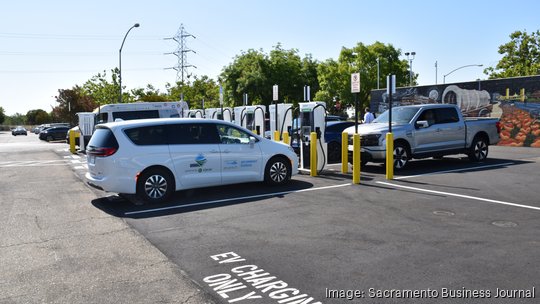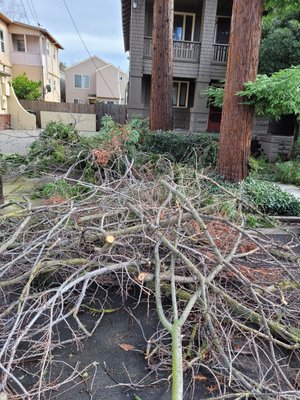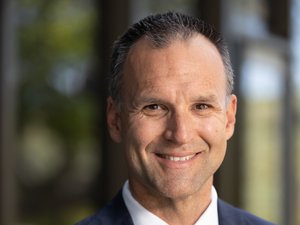
To make affordable electric vehicle fast charging more reliable and equitable to local drivers, the Sacramento Municipal Utility District plans to roll out a universal charging app along with new and cheap fast chargers guaranteed to be 97% operational in public places including the train station, airport and California State University Sacramento.
To fund the work, SMUD is seeking a $2.8 million grant from the California Energy Commission this month as well as matching funds of more than $2.3 million from itself and other sources.
“We see this as having an impact to people in our service territory,” said Evan Speer, transportation electrification specialist with SMUD.
Most EV charging is done at the home, and that allows those EV owners to benefit from low SMUD rates, Speer said. This program seeks to offer similarly low rates to residents of apartments or homes that don’t have access to a charger, as well as to Lyft and Uber drivers who may need to recharge while on the road.
As part of its proposal to add 15 dual-port fast chargers, SMUD is also proposing 97% uptime, which is far better than most charging services statewide. One ongoing complaint about public EV charging equipment is that it is often broken, offline or malfunctioning.
“Public charging is reliably unreliable,” Speer said. In an effort to solve reliability, the utility is proposing to fund workforce development to train technicians to install, maintain and repair charging equipment.
Another part of the grant proposal to the energy commission also seeks the development of an app that would aggregate access to multiple independent EV charger networks.
In its application to the commission, SMUD argues that car rentals, ride-share, food delivery drivers and drivers from low-income and disadvantaged communities have a barrier of entry to electric vehicle infrastructure compared to homeowners.
The idea behind the grant and matching funding is to lower the capital cost so SMUD doesn’t have to charge a lot for the actual EV use.
SMUD is proposing charging 15 to 25 cents per kilowatt hour of charge, which is comparable to the cost of home charging. Most commercial public charging costs from 40 to 60 cents per kilowatt hour.
The California Energy Commission will hear the proposal at its Feb. 14 meeting in Sacramento. The CEC is pumping billions of dollars into EV infrastructure. In 2020, Gov. Gavin Newsom signed an executive order mandating that all new cars sold in California starting in 2035 be zero-emission vehicles. That order was later codified by the California Air Resources Board.
The chargers are proposed to be installed at the most trafficked areas for transportation network drivers like Lyft and Uber, which include Sacramento International Airport, the Sacramento Valley Station Amtrak location and California State University Sacramento.
In many cases, the new chargers will replace older and slower chargers, Speer said.
Transportation network drivers in electric cars are a critical part of SMUD’s effort to get to zero carbon by 2030, Speer said. In addition to driving EVs, they sometimes offer their passengers their first ride in an electric vehicle. SMUD for years has put on ride and drive events featuring EVs, and an electric car hailed by a passenger is akin to a continuous ride and drive event, Speer said.
About 80% of EV charging happens at home, according to the U.S. Department of Energy. That could be Level 1 charging, which is basically just plugging into a grounded 110-volt wall socket, or it could be Level 2 charging, which requires a 220-volt plug like is used for an electric range or a clothes dryer and takes five hours. Direct current fast charging takes a battery to 90% charge in less than a half hour.
The fast chargers will be installed with integrated batteries, so that SMUD can slowly charge the battery all day to handle the short periods of fast charging without having to install more robust grid connectivity, Speer said.








